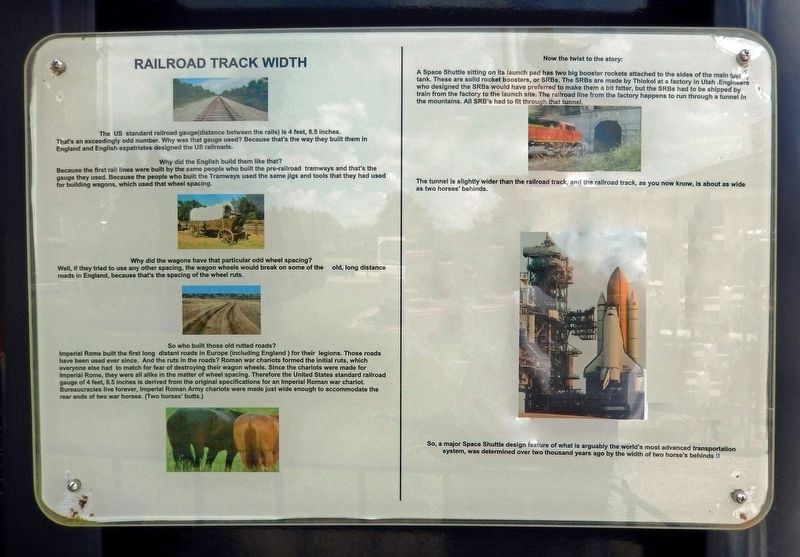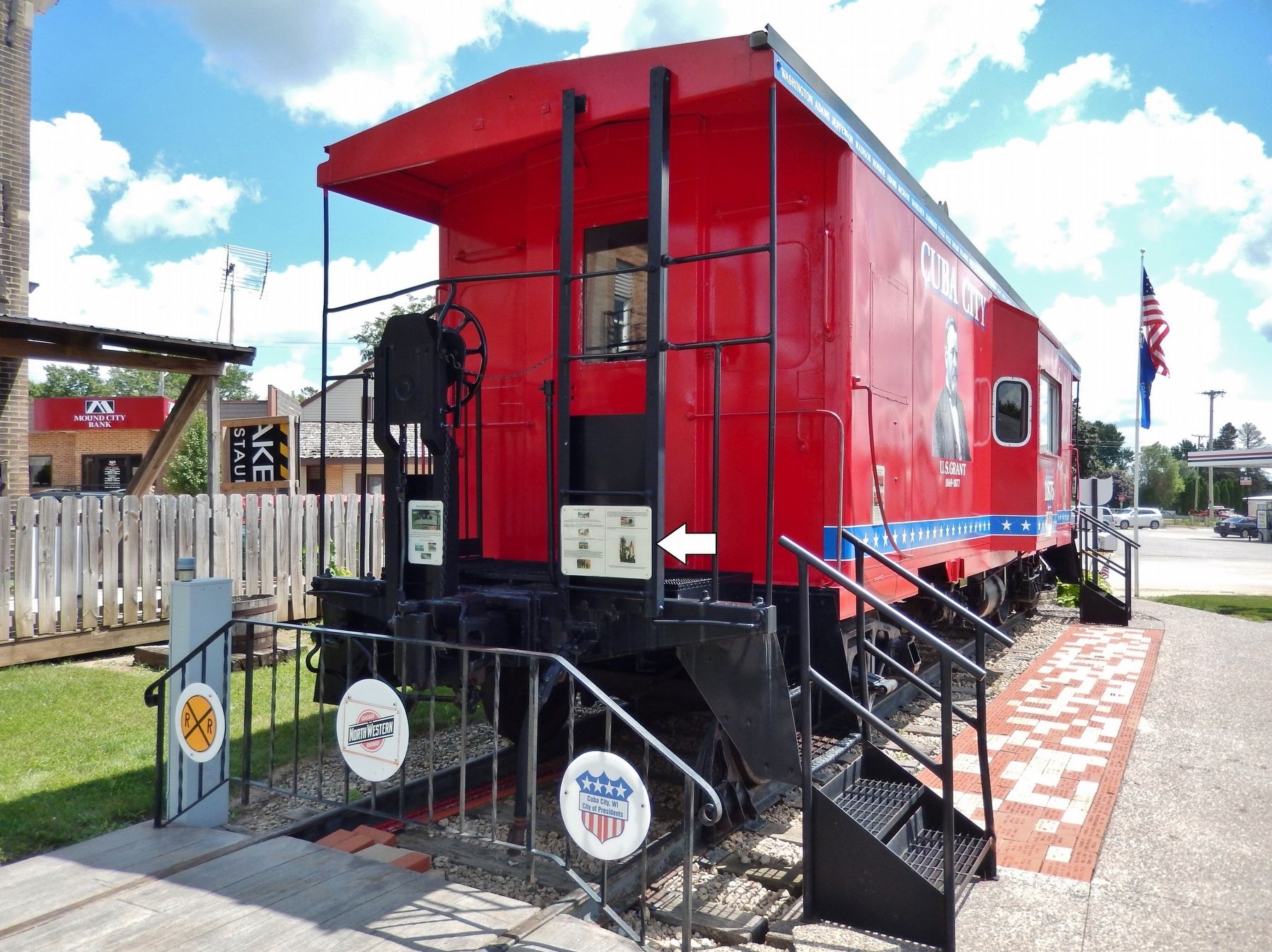Cuba City in Grant County, Wisconsin — The American Midwest (Great Lakes)
Railroad Track Width
The US standard railroad gauge (distance between the rails) is 4 feet, 8.5 inches. That's an exceedingly odd number. Why was that gauge used? Because that's the way they built them in England and English expatriates designed the US railroads.
Why did the English build them like that?
Because the first rail lines were built by the same people who built the pre-railroad tramways and that's the gauge they used. Because the people who built the Tramways used the same jigs and tools that they had used for building wagons, which used that wheel spacing.
Why did the wagons have that particular odd wheel spacing?
Well, if they tried to use any other spacing, the wagon wheels would break on some of the old, long distance roads in England, because that's the spacing of the wheel ruts.
So who built those old rutted roads?
Imperial Rome built the first long distance roads in Europe (including England) for their legions. Those roads have been used ever since. And the ruts in the roads? Roman war chariots formed the initial ruts, which everyone else had to match for fear of destroying their wagon wheels. Since the chariots were made for Imperial Rome, they were all alike in the matter of wheel spacing. Therefore the United States standard railroad gauge of 4 feet, 8.5 inches is derived from the original specifications for an Imperial Roman war chariot. Bureaucracies live forever. Imperial Roman Army chariots were made just wide enough to accommodate the rear ends of two war horses. (Two horses' butts.)
Now the twist to the story:
A Space Shuttle sitting on its launch pad has two big booster rockets attached to the sides of the main fuel tank. These are solid rocket boosters, or SRBs. The SRBs are made by Thiokol at a factory in Utah. Engineers who designed the SRBs would have preferred to make them a bit fatter, but the SRBs had to be shipped by train from the factory to the launch site. The railroad line from the factory happens to run through a tunnel in the mountains. All SRB's had to fit through that tunnel. The tunnel is slightly wider than the railroad track, and the railroad track, as you now know, is about as wide as two horses' behinds.
So, a major Space Shuttle design feature of what is arguably the world's most advanced transportation system, was determined over two thousand years ago by the width of two horse's behinds!!
Topics and series. This historical marker is listed in these topic lists: Air & Space • Animals • Railroads & Streetcars • Roads & Vehicles. In addition, it is included in the Believe It or Not series list.
Location. 42°
36.309′ N, 90° 25.864′ W. Marker is in Cuba City, Wisconsin, in Grant County. Marker can be reached from South Main Street (State Road 80) south of West Webster Street, on the right when traveling south. Marker is mounted at eye-level on the west end of the Presidential Courtyard caboose exhibit. Touch for map. Marker is at or near this postal address: 203 South Main Street, Cuba City WI 53807, United States of America. Touch for directions.
Other nearby markers. At least 8 other markers are within walking distance of this marker. The Chimes of Time (a few steps from this marker); The Speeder Car w/Tools (a few steps from this marker); City of Presidents — Presidential Shields (a few steps from this marker); The Whistle Post (a few steps from this marker); Baggage / Milk Cart (a few steps from this marker); Tools of the Railroad (a few steps from this marker); The Milk Trains (a few steps from this marker); Semaphore Signal (Traffic Signal) (a few steps from this marker). Touch for a list and map of all markers in Cuba City.
Also see . . . Standard-gauge Railway.
A popular legend that has been around since at least 1937 traces the origin of the 4 feet 8.5 inch gauge even further back than the coalfields of northern England, pointing to the evidence of rutted roads marked by chariot wheels dating from the Roman Empire. Snopes categorized this legend as "false", but commented, "it is perhaps more fairly labelled as 'True, but for trivial and unremarkable reasons'". The historical tendency to place the wheels of horse-drawn vehicles around 5 feet apart probably derives from the width needed to fit a carthorse in between the shafts.(Submitted on March 23, 2023, by Cosmos Mariner of Cape Canaveral, Florida.)
Credits. This page was last revised on March 23, 2023. It was originally submitted on March 23, 2023, by Cosmos Mariner of Cape Canaveral, Florida. This page has been viewed 217 times since then and 26 times this year. Photos: 1, 2. submitted on March 23, 2023, by Cosmos Mariner of Cape Canaveral, Florida.

